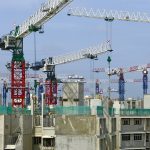Resale flat transactions jumped significantly in Q2 2017, rising by 32.5 per cent. With a big rebound in sales volumes, it looks like we’re on the brink of a big shift in the property market. But what does 2017 hold for those who want to buy resale flats? We take a brief glimpse:

Image Credits: HDB Resale Flat, Pinacle at DUSK, Paul Ho, www.iCompareLoan.com
Sales volumes are rising, but prices are static
Resale flat prices have barely moved since mid-2015. In the past three quarters, they dipped by a barely perceptible 0.5 per cent between Q4 2016 and Q1 2017, and then by a tiny 0.1 per cent in Q2 2017. But while prices have been static, the volume of resale transactions rose from 4,530 to 6,001, between Q1 and Q2.
Traditionally (but tradition is never reliable), this suggests an inflection point; when sales volumes go up but prices are static, it means prices have reached the level where buyers are starting to flood back in. In the past, that would get everyone excited: what followed was often a sharp increase in prices. These days that probably won’t happen – a combination of loan curbs and cooling measures are in the way.
Still, if you’re interested in resale flats, this could be a sign that your wait for the best price is probably at an end (if it isn’t there already). It doesn’t seem like sellers are willing to go any lower, and most buyers are no longer pushing them to do so.
That aside, here are three other things you should know:
- Most resale flats no longer have any Cash Over Valuation
According to a previous press release by Propnex, around 80 per cent of resale flat transactions in 2016 had no Cash Over Valuation (COV).
COV refers to the price of an HDB flat above its assessed value. This amount must be paid in cash, and cannot be covered by the home loan. If the last time you purchased a resale flat (or looked at its price) was before March 2014, you might be interested to know the rules have changed. Buyers are now required to negotiate the total price of the flat, before the actual valuation. This means that COV is no longer an expected norm, which accounts for the significant increase in affordability (in the old days, such as in 2011, COVs hit sky high figures that often exceeded $35,000).
It is this change in March 2014 that really drove down the COV, and made resale flats more affordable. However, the effect is now compounded by the general slump in property prices, which makes resale units financially attractive.
- The government increased grants for resale flats during Budget 2017, and it’s made resale flats very attractive
During Budget 2017, grants were increased for first-time buyers of resale flats. The grant for four-room or smaller resale flats is now $50,000, and the grant for five-room or larger resale flats is now $40,000. Previously, the grant for resale flats was just $30,000.
In addition with the other CPF housing grants, the total potential subsidy for a resale flat is now $110,000. If your main aim is to live in a mature area, and you want a condo, you might want to consider resale instead:
Let’s look at the prices of a resale flat in Marine Crescent (Marine Parade area). This is a much liked area in District 15, with many eateries and Parkway Parade (a suburban mall) within reach. The beach is just a few minutes drive away. For resale flats here, prices are around $600 to $650 per square foot. A typical four-room resale unit in this area might be priced at around $520,000.
Now, let’s look at a private condo in the area, which enjoys the same amenities of this location. Cote D’Azur averages around $1,200 per square foot, with most units going at around $1.2 million to $1.4 million. After the full subsidies, a four-room resale flat in the area would cost around $410,000; less than half the prices of these condos, with all the same amenities (except the usual pool and gym routine).
The increased grants and low price points make resale flats – particularly those in mature districts – highly desirable right now; the rising sales volumes were predictable in that sense.
- It’s not just good news for buyers; many sellers are standing on huge gains, even given the falling prices
As ERA pointed out (paywall) in 2015, resale flat prices rose a staggering 104 per cent between 2005 and 2015. Comparatively, resale prices have fallen by just around 10 per cent since the peak in 2013. The so called “slump” is mainly illusory for sellers of resale flats. Now might be an ideal time for many of them to upgrade, given that private property prices are also low. On top of that, they shouldn’t have a hard time finding buyers at all, given the strong interest and subsidies for resale flats.
It’s a rare situation, in which both buyers and sellers can claim to be coming out ahead.
Really, HDB flat is not for everyone as the regulation keeps changing. You may want to check out when is the best time to buy a property in Singapore.
But if you’re not using an HDB loan, don’t forget to factor in rising interest rates
Gone are the days of cheap interest rates, which partly fueled the property market in 2008/9. Most SIBOR based interest rates are now around two per cent per annum and climbing, as American normalises and imposes rate hikes (these eventually cause interest rate to rise in Singapore as well). Fortunately, there are a range of other options – such as Fixed Deposit Home Rates (FHR), which are detached from SIBOR rates. Speak to one of our mortgage broker, and we’ll help you keep your home affordable in the long run.
For those who are yet unfamiliar, read more about what is a Mortgage Broker.





